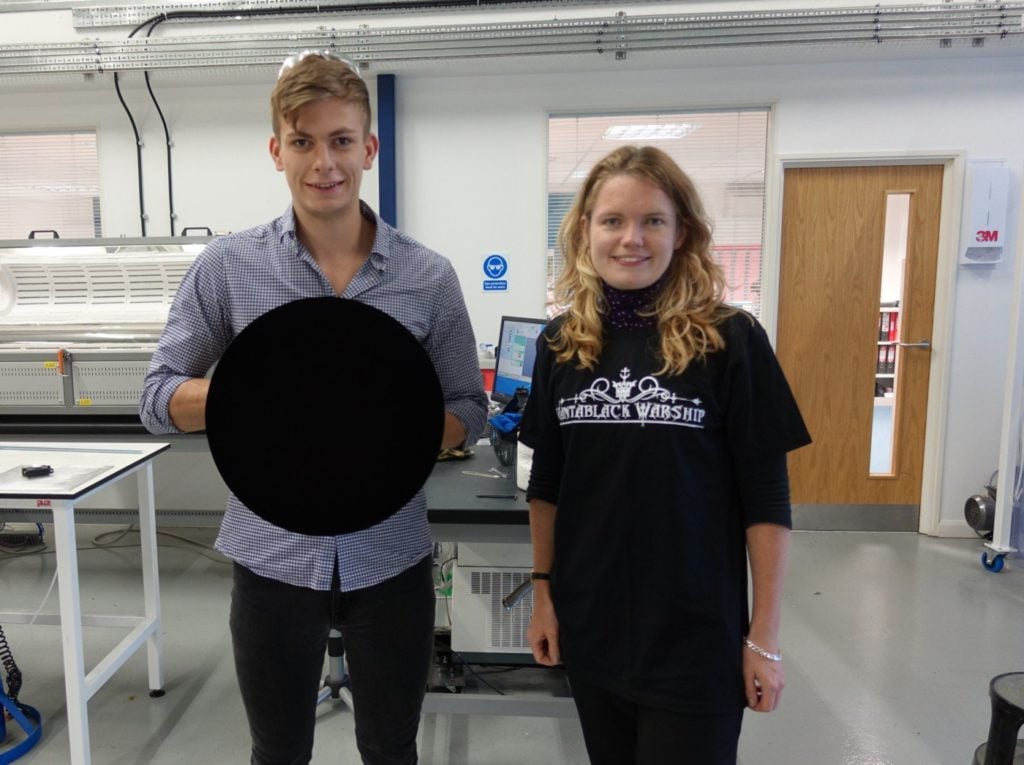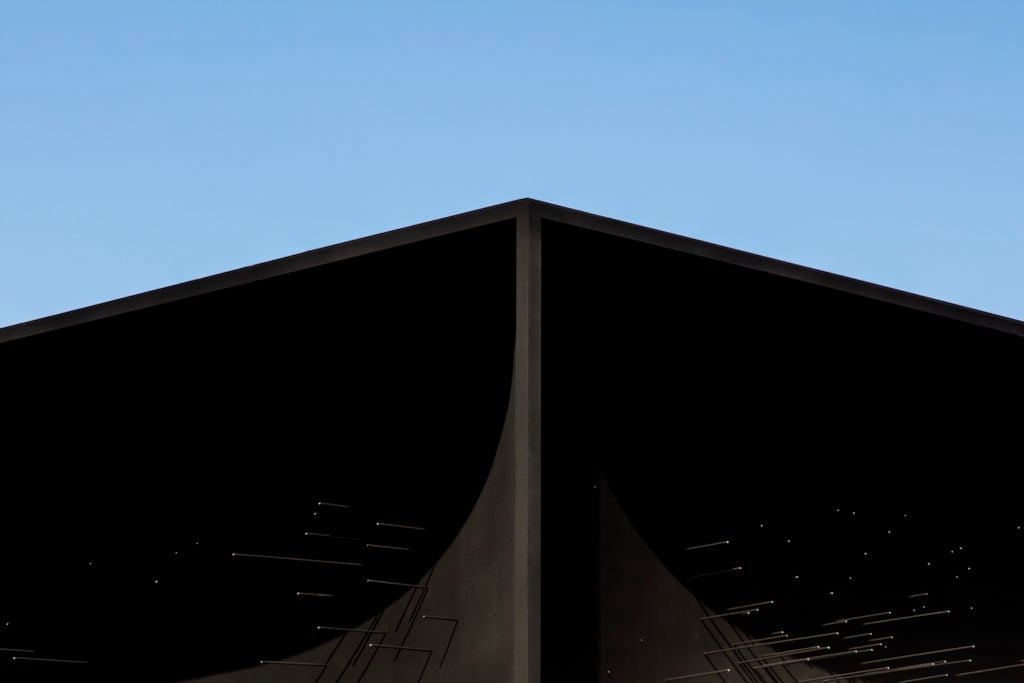What does Anish Kapoor have to show for his controversial monopoly on Vantablack, the self-proclaimed “blackest material in the universe”? The world will find out during next year’s Venice Biennale, when Kapoor unveils a series of works made with the technologically-advanced substance at the Galléria dell’Accademia.
When London aerospace company Surrey NanoSystems announced that they had invented a “super black” made from a dense field of long, microscopic carbon nanotubes in July 2014, Kapoor’s interest was immediately piqued. By September of that year, the artist had announced plans to use Vantablack in his work. A year and a half later, he secured the exclusive rights to make Vantablack art.
Kapoor initially predicted he’d be able to coat an entire room with the substance within a few months, but working with the material has proved extremely complicated. Scientists have to use a reactor to make Vantablack and adhere the delicate material to a given surface—especially challenging because carbon nanotubes previously could only be grown at ultra-hot temperatures. The process, originally developed to make a cloaking material for military hardware and for other aerospace purposes, remains top secret.
But we do know why the stuff looks so black. Because each carbon nanotube is 300 times as long as it is wide, Vantablack traps nearly 100 percent of the light—99.96 percent, to be exact—that falls on its surface. The astonishing effect is that the material appears like a bottomless void, seeming to eat lasers.
“The particles stand up like velvet when they are put to a reactor,” Kapoor explained to the during a recent sneak peek of the new Vantablack works. “When the particles stand up next to each other light gets trapped in between each particle.”
That means the contours of a shape coated in Vantablack essentially disappear, almost as if Photoshopped out of existence. In the past, Kapoor has marveled over the possibilities such an effect presents.

Vantablack. Courtesy of Surrey NanoSystems.
“Imagine walking into a room where you literally have no sense of the walls—where the walls are or that there are any walls at all,” he told in 2015. “It’s not an empty dark room, but a space full of darkness.”
Despite Kapoor’s exclusive contract as the only artist who’s allowed to use Vantablack, we got a glimpse of what the substance might look like during the 2018 Winter Olympics in Pyeongchang, South Korea. Asif Khan—a British architect, thus able to skirt Kapoor’s artist monopoly—created a stunning Vantablack installation in Olympic Park with 30-foot-tall walls seemingly coated with twinkling stars. (They actually protruded from the building’s concave façade.)

Asif Khan, Hyundai Pavilion featuring Vantablack at the Pyeongchang Winter Olympics. Photo courtesy of Luke Hayes/Hyundai.
The upcoming show, curated by art historian Taco Dibbits, director of the Rijksmuseum in Amsterdam and on view May 3–October 3, 2020, will mark the first time a British artist has had a major solo show at the Accademia.
It’s also the first public display of Vantablack-based art, although Kapoor unveiled a limited-edition $95,000 Vantablack timepiece with Swiss watchmaker Manufacture Contemporaine du Temps in fall 2016. (You can expect to start encountering Vantablack in more places, possibly including a California movie theater, reports Fast Company.)
Other artists—particularly Stuart Semple, who has begun producing his own super black paints and other superlative pigments and art supplies, available to everyone Kapoor—have criticized the artist for banning others from using Vantablack.

Anish Kapoor (1990). Photo: courtesy of Lisson Gallery.
But Kapoor stands by his decision, arguing that he collaborated with Surrey NanoSystems to be able to adapt Vantablack for artistic use and thus is entitled to exclusive rights to the material. He’ll show the new works made using the material alongside red and blue “void” sculptures that appeared in the 1990 British Pavilion at the Venice Biennale and won Kapoor the 1991 Turner Prize, presenting the idea of the void as a through line in his oeuvre.
But the upcoming show will present new challenges in the new material. The surface of Kapoor’s Vantablack works are so fragile they cannot be touched, which will make shipping and installation tricky. The carbon nanotubes bend easily—and when they bend they no longer absorb light, destroying the works’ illusory properties.
Source: Exhibition - news.artnet.com



